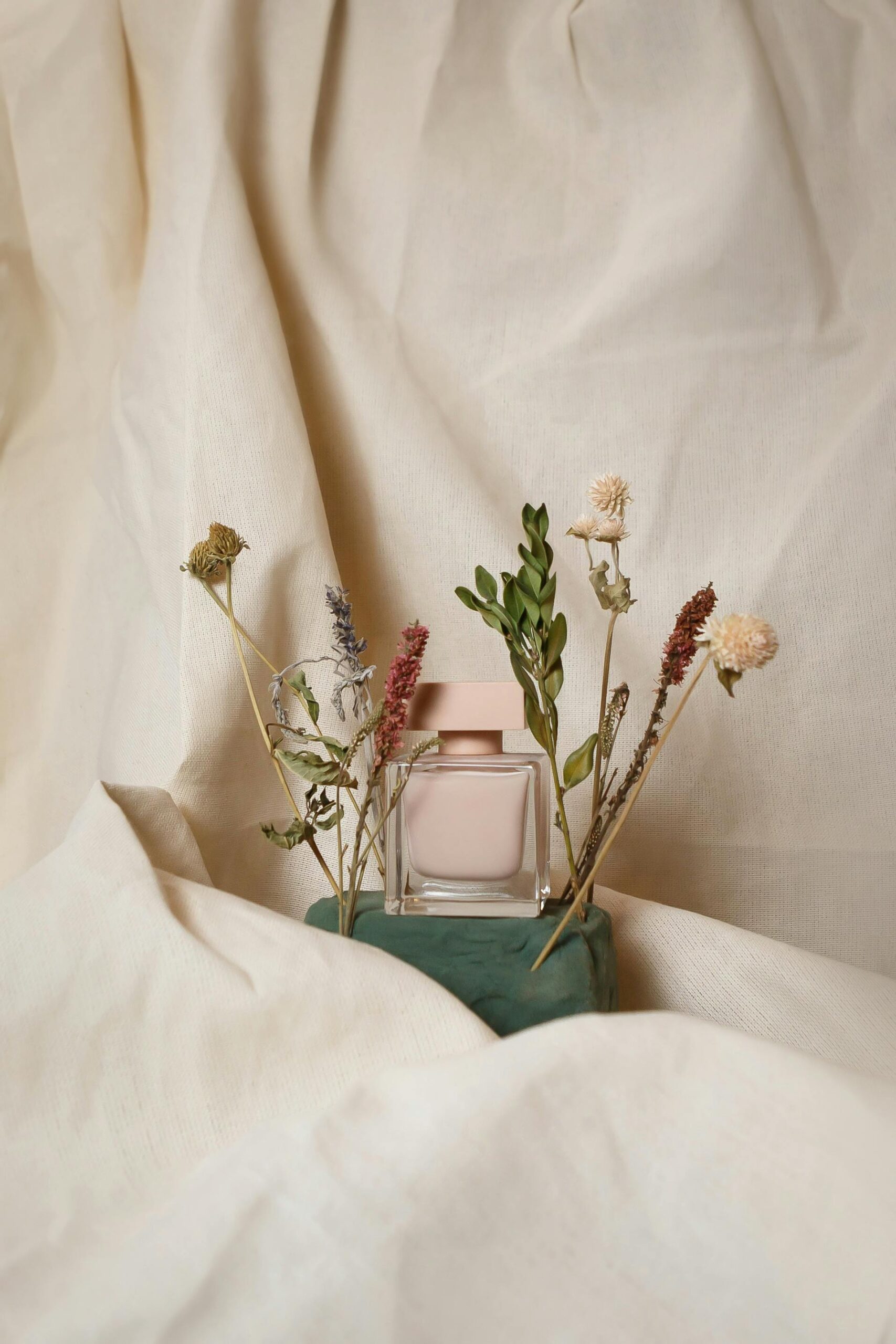
EAU DE WHAT?
The first thing to understand is how these scents are created. Manufacturers combine scented raw botanical oils with a carrier like alcohol. This binds the smell and dilutes the oils. The alcohol helps control the concentration of the fragrance and how long it lasts. Perfume concentration refers to the strength that a perfume has. The higher the perfume-to-alcohol ratio, the higher the concentration. The lower the fragrance percentage gets, the lower the concentration. Fragrance categories thus follow a spectrum: parfum, eau de parum, eau de toilette, eau de cologne, and eau fraiche.
Pure Perfume, Parfum or Extrait De Parfum
The highest concentration of scent is a pure perfume. Usually, between 15 and 40 percent perfume oil, a parfum, is a potent concentration that lasts all day between 6-8 hours. These tend to be more statement fragrances made for the evening. Parfums are often an ideal option for people with sensitive skin as they have less alcohol, thus, are not as likely to be drying on the skin.
Eau de Parfum (EDP)
Eau de parfums have the next-highest concentration of perfume oils, between 15 and 20 percent. They are made to last on the skin all day but are not as potent as parfums. Eau de parfum will typically last for 4-5 hours. EDPs are the most distinct scent category in fragrance and typically how most commercial fragrances are released.
Eau de Toilette (EDT)
The term eau de toilette came from the French term “faire sa toilette” which translates to “getting ready.” Eau de toilettes have a lower concentration of perfume oils, usually 5 to 15 percent. They are made to have more light wear on the skin and tend to last for 2-3 hours. ETDs are an excellent choice for daywear and are perfect for when you want to smell pleasant but not intense; think a spritz before a meeting. Fragrance companies often create a couple of iterations of their fragrance – an EDP and An ETD. However, the two can sometimes share different notes as well as concentrations. For instance, heavier base notes like sandalwood or amber may be removed to make the fragrance lighter, while others, like citrus notes, will stay for levity.
Eau de Cologne
Eau de cologne is for a very light concentration of perfume oils, of 2 to 4 percent. This blend is often cut with more alcohol and lasts only a few hours. These are great to spritz and revive but only for some-day, lasting wear.
Eau Fraiche
The lightest fragrance is an eau fraiche with a shallow concentration of perfume, sometimes 1 to 3 percent. The main difference between colognes and eau fraiche’s is that colognes are mixed with alcohol. In contrast, eau fraiches are mainly combined with mostly water and act as a brief refresher without a long-lasting fragrance.
There is so much to fragrance, from the types of concentrations to the complex ingredient lists. At Perfume playground, we are perfume nerds and enthusiasts who are still learning! To geek out on this stuff with us, sign up for one of our classes for a more hands-on learning approach that combines creativity and play!




Leave a comment